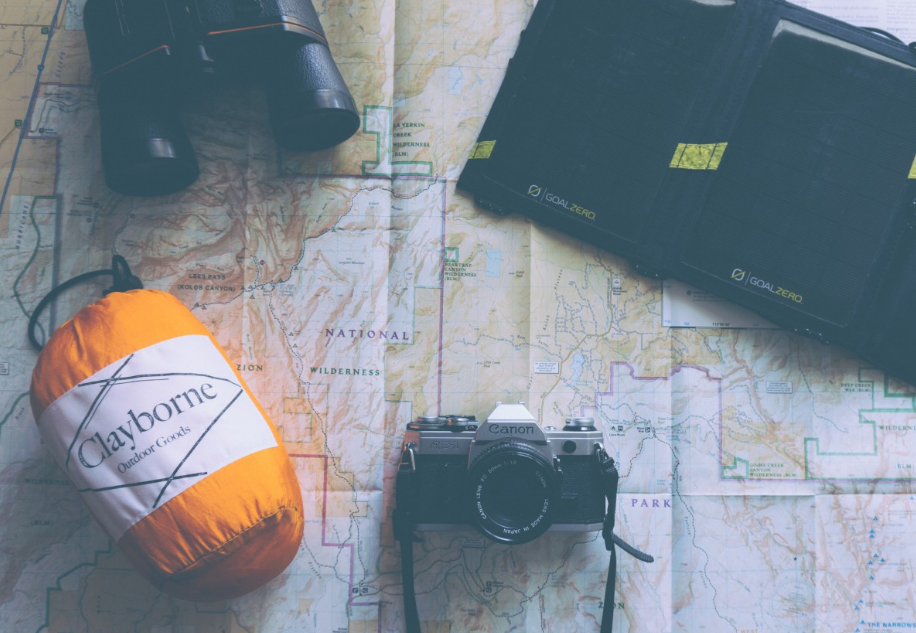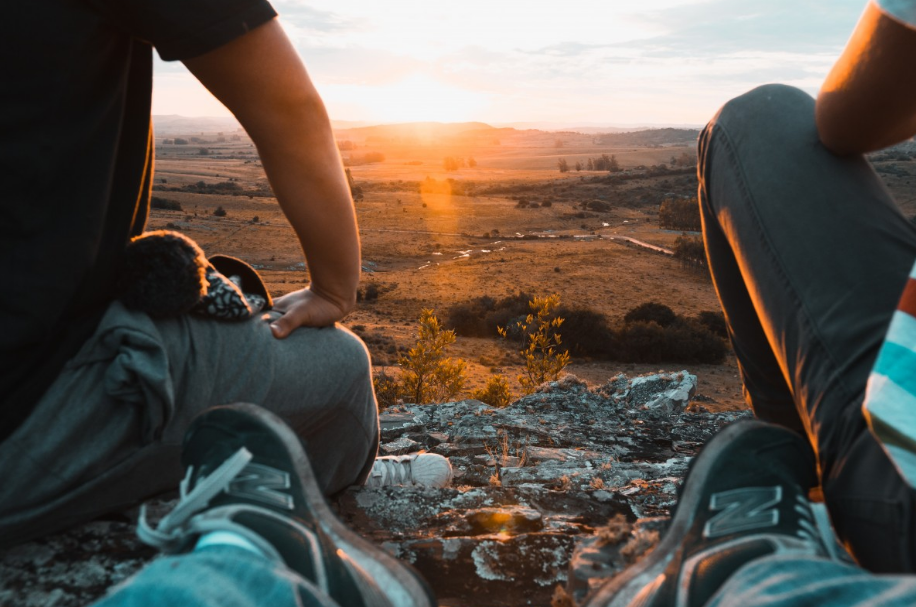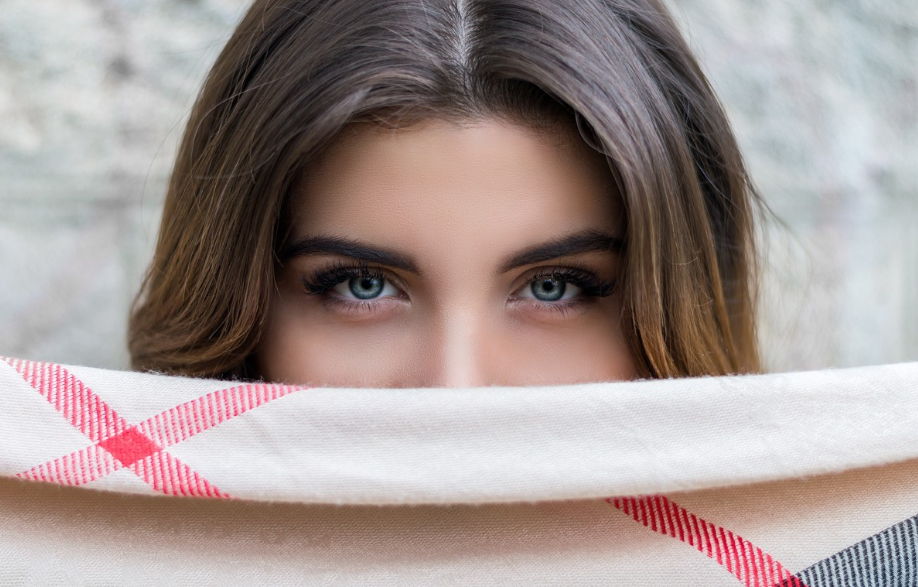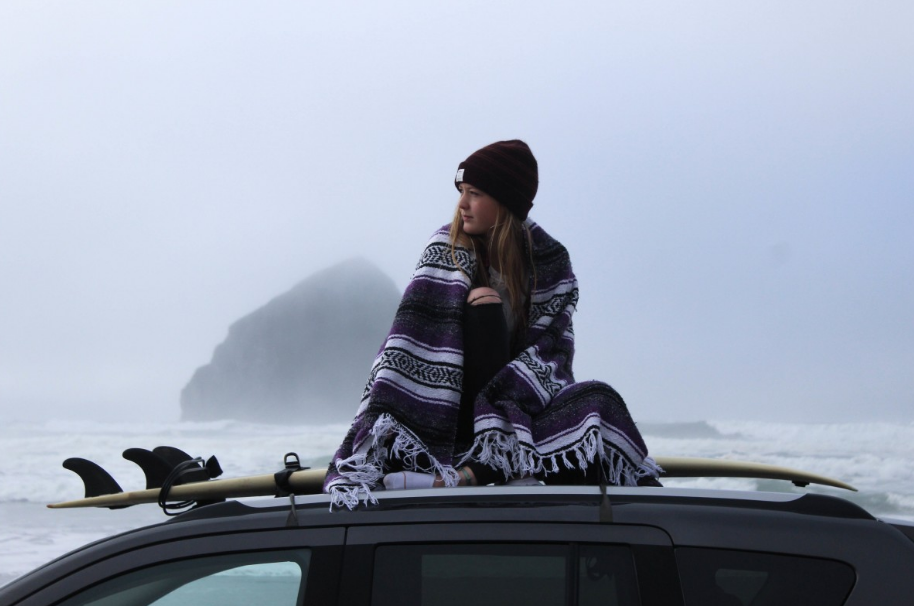Some people who go camping for the first time think that they can just spend the night out in a hammock and enjoy the cool breeze. But that’s not realistic at all, because sleeping in the outdoors in the summer can still be uncomfortably cold. That’s why you need to learn how to choose a sleeping bag so that you can sleep comfortably when you’re camping overnight.

However, a sleeping bag that’s good for one person may not work at all for another person. In addition, you may need different sleeping bags for different weather conditions. Your budget may also be limited, and that affects your options as well.
You have to remember that you need a sleeping bag and not just a mattress. That’s because even with a blanket you can still get too cold at night, and a mattress isn’t going to be good for backpacking.
You also shouldn’t rely on a sleeping sack, even if you pick from sleeping sacks for adults. They’re not also going to cut it against the weather.
You need a sleeping bag, and here are the factors you need to consider when you’re looking for one to buy:
What’s Your Activity?
In this case, “activity” refers to 3 main purposes: camping, backpacking, or mountaineering.
- Camping. A regular camping sleeping bag assumes that you’re bringing your gear to your campsite using a car. Or perhaps you’re just camping in your backyard. Either way, you’re not going to have to carry the bag too far.
A camping bag is therefore heavier and bulkier, so it’s not terribly portable. On the other hand, it’s big and heavy because they’re more comfortable. They also don’t have any technical features to make them lighter and more compact, so they’re generally more affordable.
- Backpacking. This is a sleeping bag in which you have to consider the weight. That’s because you have to carry the thing for miles into your campsite, so every pound matters. It can’t be too bulky either. The key for you here is to get the lightest sleeping bag that your budget can afford, while it’s still warm enough to let you sleep without any trouble.
- Alpine climbing or mountaineering. It’s like a backpacking sleeping bag which means it’s lightweight and compressed, but it must also be water-resistant and very warm. At many thousands of feet above sea level, the air can get very cold indeed. The moisture levels are also higher.
Temperature Ratings and Seasonality

Many bags come with temperature ratings. If you have a 30 degree sleeping bag, it means you’re nice and warm when it’s 30 degrees. But if the temperature gets any lower, your comfort level goes down too as you’ll feel too cold. If you have a 0 degree sleeping bag, then you can still sleep comfortably even when the temperature drops to zero degrees F.
Just remember that these ratings assume that you’re also using a sleeping pad.
So go ahead and buy that sleeping bag, since it’ll make you feel more comfortable anyway. Often the bags are also categorized by the season for which they should be used:
- 4-season bags. A 4-season sleeping bag is designed to be used at any time of the year. If the manufacturers do succeed at this (sometimes they exaggerate), then it can get very expensive.
- Winter sleeping bags. This is designed to deal with the cold winter months, and you need this if the temperature will drop to 10 degrees F or lower. You’re best off with a zero degree sleeping bag so you’re ready for the really cold weather.
- 3-seasons sleeping bag. The seasons here are spring, summer, and autumn. This is the type of bag you want if the temperature at night is within 15 to 30 degrees F. In general, the ideal rating is for 20 degrees F. It should be good enough for the summer since you can just unzip the sleeping bag to get your legs out. If it gets too cold, then you can wear more layers and use a sleeping bag liner.
- Summer sleeping bag. A warm weather sleeping bag is great for the summer, so you don’t wake up sweating in the morning. Usually you’ll want cool sleeping bags that are rated for 35 degrees F or even higher.
Fill Type

The insulation in the sleeping bag that keeps you warm will generally be made of either down or synthetic materials.
Many consider down as the superior choice. A down sleeping bag will be warmer than a synthetic that weighs the same.
It’s what’s used for compressed sleeping bags, and it will keep lofting even when you stuff your sleeping bag into compression sleeping bags hundreds of times.
It’s simply the lightest and most durable. It’s also easy enough to keep dry as you can just put it in a waterproof camping bag. On the other hand, a sleeping bag with synthetic insulation can still keep you warm even when it’s been soaked in water.
It dries out faster too. That’s why in places with high moisture levels, many go for synthetic instead. Finally, a synthetic sleeping bag is also much more affordable.
Down Fill Power
If you pick a down sleeping bag, you’re among the majority. It’s an understandable choice. So how lofty do you want your down sleeping bag to be? This all depends on the down fill power value:
- 800 to 1,000. A bag with this down fill power will be extremely lightweight. It can also be compressed to a very small size. The main drawback is that they’ll be expensive—some can even cost more than a thousand bucks.
- 700. This is the midrange option, keeping a balance between the weight of the bag and the cost.
- 550 to 600. It’s somewhat heavier than and not as compressible as the other down sleeping bags with higher down fill power. Still, it’s lighter and more compressible than synthetic. It’s also the most affordable down sleeping bag.
Lining Fabric
The fabric that makes up the lining can affect your sleep considerably.
- Cotton or flannel. These are natural materials that are lightweight, durable, and breathable. A cotton or flannel sleeping bag is easy enough to repair and clean. A cotton sleeping bag should only be used for camping in moderate or dry environment, because it traps moisture.
- Silk. It’s breathable, supple, and soft. It won’t overheat from trapping body warmth. On the other hand, it tears very easily and it’s not easy to repair.
- Fleece. This and other brushed linings feel soft on your skin. It will keep you warm when the temperature starts to drop. But it traps heat, so it can get uncomfortable when you sleep in the same spot for a long time.
- Taffeta, nylon, and polyester. There are very popular, as they’re smooth and soft fabrics. They’re comfy and breathable, and when you lie on the same spot for a long while these fabrics won’t heat up as much. The cheaper bags will use polyester or nylon linings, but taffeta is the fabric among the three with the highest quality so a bag with a taffeta lining will be more expensive.
We think you'll like: How to Patch a Tent | Fixing Screen and Mesh Tips
Sleeping Bag Sizes
It’s best that you get a sleeping bag in exactly the right size. If it’s too long, you’ll have more space inside the bag and so it takes more time to heat up. If it’s too short, then your head and feet will press against the bag ends and compress the insulation to make it less effective.
Here are the typical sizes and lengths of sleeping bags for adults you can choose from:
- Men’s long. 84 inches (for up to 6 feet six inches in height)
- Men’s regular. 78 inches (6 feet)
- Women’s long. 78 inches
- Women’s regular. 72 inches (up to 5 feet 6 inches)

You may find big and tall sleeping bag models if you’re especially large. If you wish to sleep with someone in the same bag, then you can get a 2 person sleeping bag. Some bags are zip together sleeping bags. You can sleep alone in one, and then you can zip together two of these bags so both of you sleep in the same bag.
A women’s sleeping bag is designed for the gender’s typical proportions and needs. It’s narrower at the shoulders, wider at the hips, and there’s more insulation.
Women typically feel the chill more, so they need more insulation. A sleeping bag that’s warm enough for a man may not be warm enough for a woman.
There are sleeping bags for children too, though in shape and insulation they’re unisex. However, in general the sleeping bags for girls are more feminine. We recommend reading our best girls sleeping bags reviews here.
Sleeping Bag Shapes
Types of sleeping bags can also be according to the shape of the sleeping bag. Here are the most common shapes you can pick from:
- Rectangular. For recreational camping, this is the most common shape for sleeping bags. The shape is easy to mass produce. Since it’s like a cot or small mattress, it’s familiar and you’re able to sleep in a more natural position. You can also just zip it open and use the top portion as a blanket.
We think you'll like: 6 Best Folding Tent Camping Cot Reviews
On the other hand, the extra material makes it heavier and bulkier. There’s also more dead space to warm, so it’s not as effective at keeping you warm as other sleeping bag shapes.
- Mummy. These tightly conform to your shape, so they’re very effective in keeping you warm. There’s also less extraneous material, which makes it lighter. However, some people find it claustrophobic.
- Semi-rectangular. It’s a mix of mummy and rectangular shape, as a compromise between the two. You save weight, but you have a bit more room for your legs.
- Hourglass. This is like the rectangular but the waist area has been slimmed down. Again you have more room for your legs, but the smaller dead space is more efficient in keeping you warm.
Features
Sleeping bags can have features that make them more convenient and easier to use:

- Zipper location. If you’re right-handed, you’ll want the zipper on your left. If you’re a lefty, it should be on your right.
- Snag-free zipper. This means the zipper doesn’t get snagged in fabric.
- Draft tubes. A draft tube is an insulation chamber that runs along the length of the zipper. Without it, the cold draft can seep through the zipper seam.
- Vertical baffles. The baffles are the chambers containing the insulation materials. Vertical baffles are typically more comfortable, but they’re generally heavier.
- Horizontal baffles. These bags are warmer than the bags with vertical baffles. But they can’t be sculpted into comfy ergonomic shapes.
- Hoods. You may want a full body sleeping bag that covers your head too. You don’t really need one for summer camping, but they become more important as it gets colder. You need one that fits well around your head. If it’s ill-fitting, it can get uncomfortable when you draw it tight.
Conclusion
You should get a sleeping pad, as it adds an extra layer between your sleeping bag and the cold ground. A liner is also a good accessory to get, as it can make you feel warmer.
If it’s cold and rainy, you may want a bivy sack or a tent. The basic purpose of a bivy sack is to add a thin waterproof fabric over you in your sleeping bag to protect you while you sleep. It provides insulation and prevents wind chill and rain.
Just remember that you’re supposed to also wear warm clothes when you’re using a winter sleeping bag. If you’re camping during the summer, then you need cool breathable clothes as well. While you certainly need sleeping bags that are appropriate for the temperature, you need to pick your clothes with the same principle in mind.
